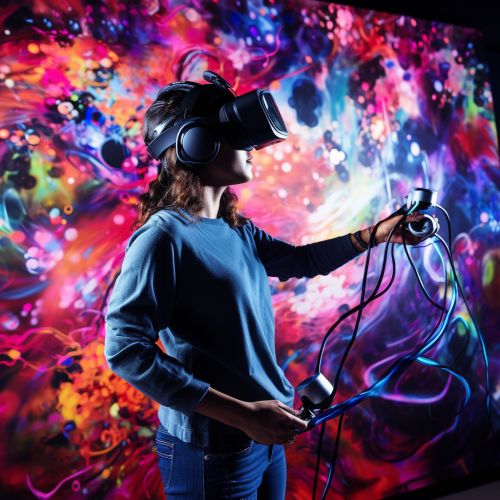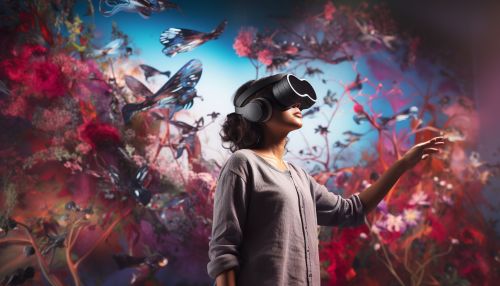Virtual Reality Art
Overview
Virtual reality (VR) art represents a new frontier in artistic expression, allowing artists to create immersive, interactive experiences that challenge traditional boundaries of art. This form of art utilizes VR technology, which simulates a user's physical presence in a virtual or imaginary environment. VR art is a multidisciplinary field that combines elements of visual art, performance, and technology.


History
The history of VR art is closely tied to the development of VR technology. The concept of VR was first introduced in the 1950s and 1960s, but it wasn't until the 1980s and 1990s that VR technology became more accessible and affordable, paving the way for its use in art. Early pioneers of VR art include artists such as Char Davies, Myron Krueger, and Jeffrey Shaw, who began experimenting with VR as a medium for artistic expression in the late 20th century.
Techniques
VR art employs a variety of techniques, often combining traditional artistic methods with advanced technology. Artists may use 3D modeling software, VR headsets, motion sensors, and other tools to create and interact with their work. The creation process can be highly immersive, with artists able to "step inside" their artwork and manipulate it in three dimensions.
Genres
There are several genres within VR art, each with its own unique characteristics. These include:
- Immersive Art: This genre focuses on creating a fully immersive experience for the viewer. The artwork is designed to envelop the viewer, often using 360-degree visuals and sound to create a sense of being inside the artwork.
- Interactive Art: In this genre, the viewer is able to interact with the artwork in some way. This could involve manipulating the artwork using hand controllers, or influencing the artwork through their movements or actions.
- Performance Art: This genre involves live performances that incorporate VR technology. The performer may wear a VR headset and interact with a virtual environment, with their actions projected onto a screen for the audience to see.
Impact on the Art World
The advent of VR art has had a significant impact on the art world. It has challenged traditional notions of what constitutes art and has opened up new possibilities for artistic expression. VR art is inherently experiential and interactive, offering viewers a more immersive and engaging experience than traditional forms of art. It also allows for greater accessibility, as VR artworks can be shared and experienced remotely via the internet.
Future of VR Art
The future of VR art is likely to be shaped by advances in VR technology. As VR becomes more sophisticated and immersive, artists will have even more tools at their disposal to create innovative and engaging artworks. There is also potential for VR art to become more mainstream as VR technology becomes more widely available and affordable.
